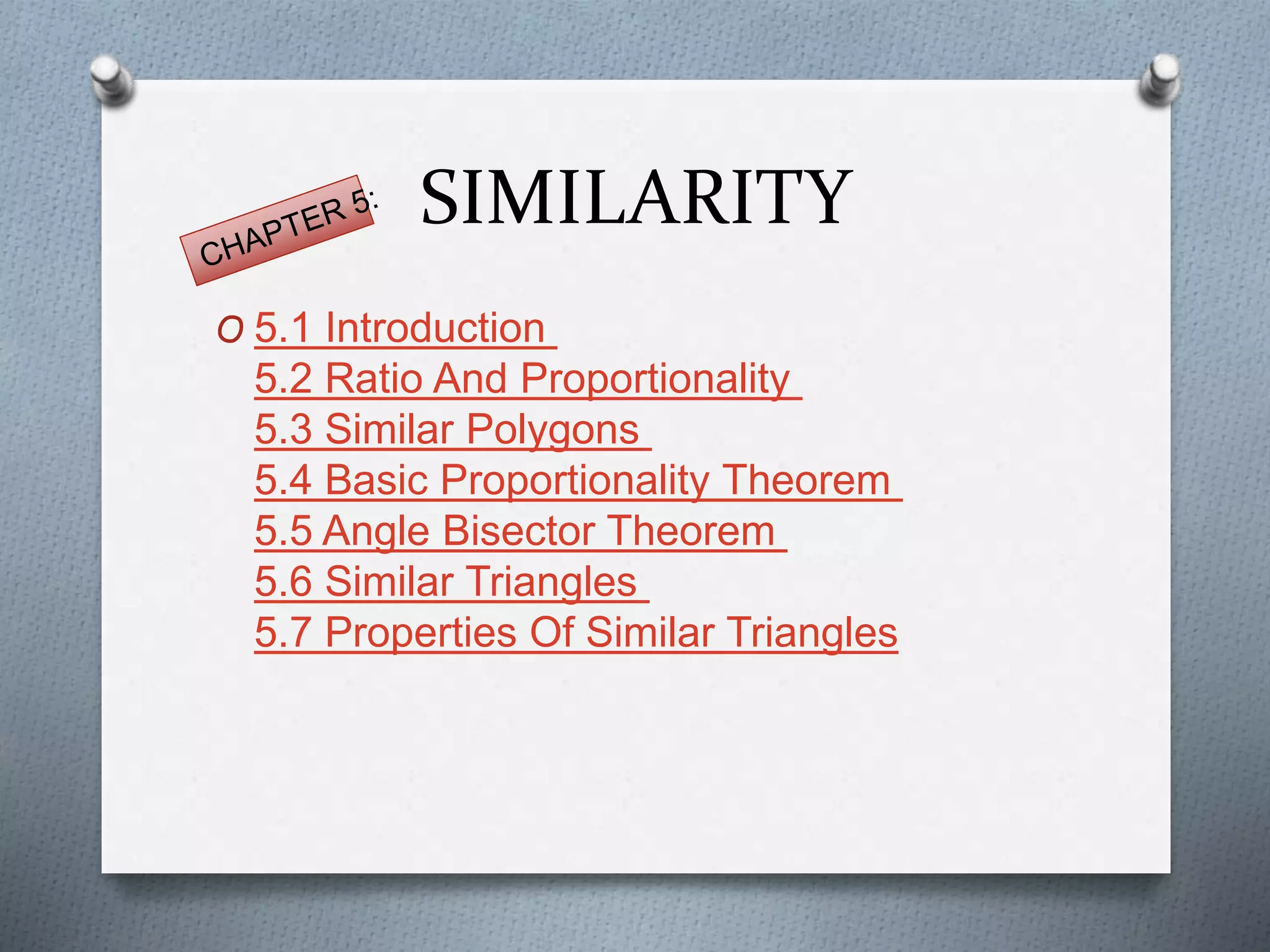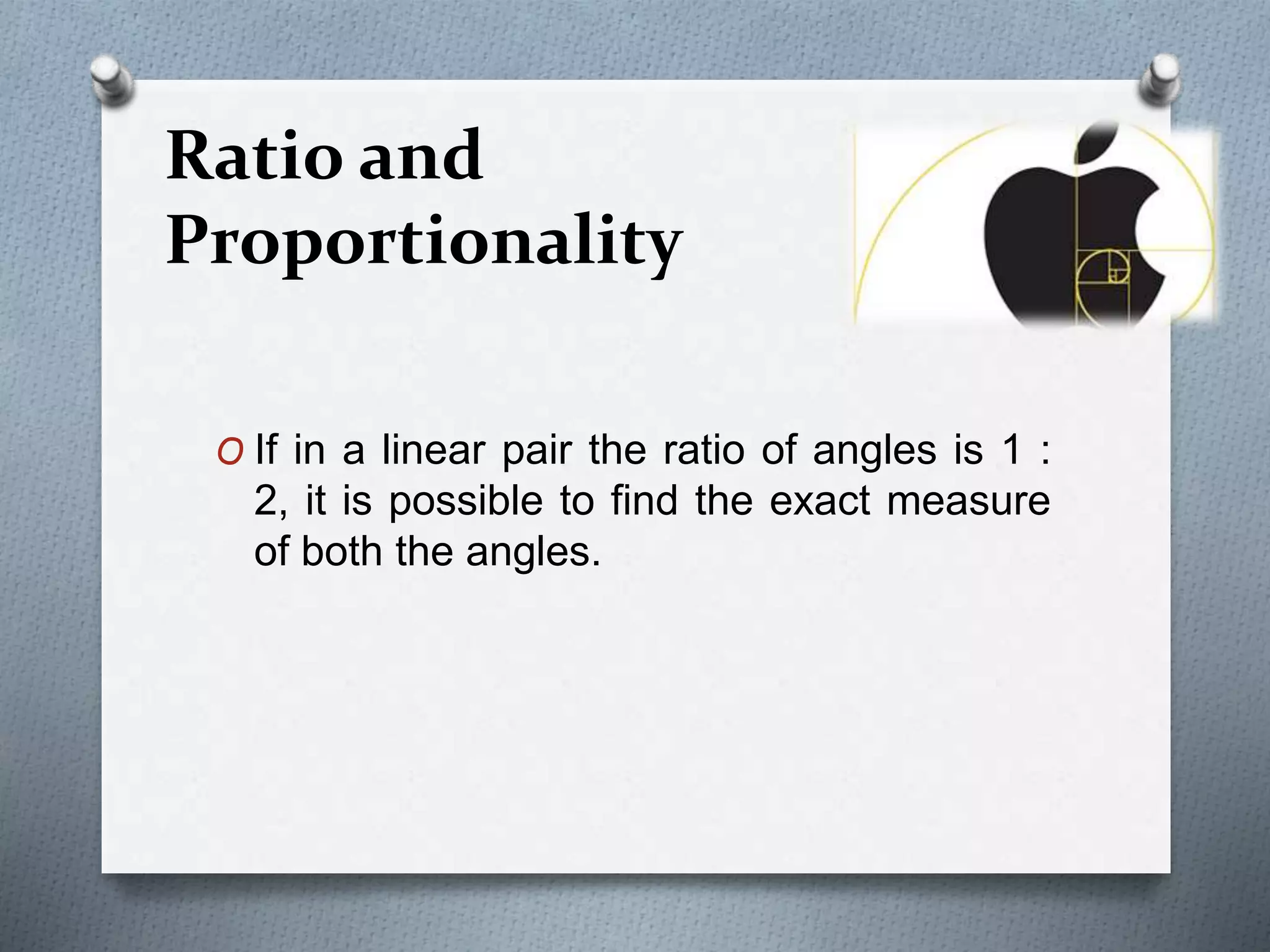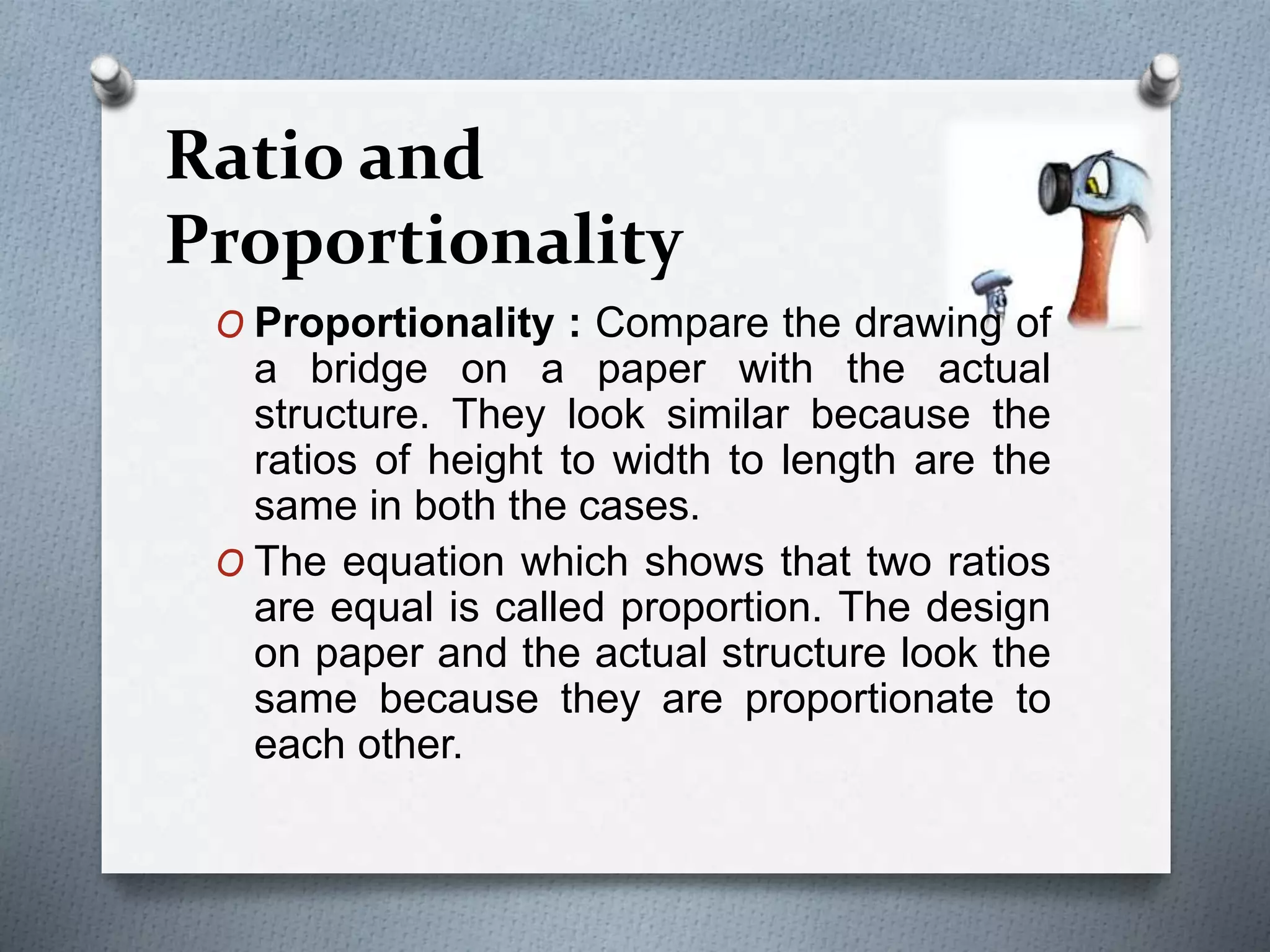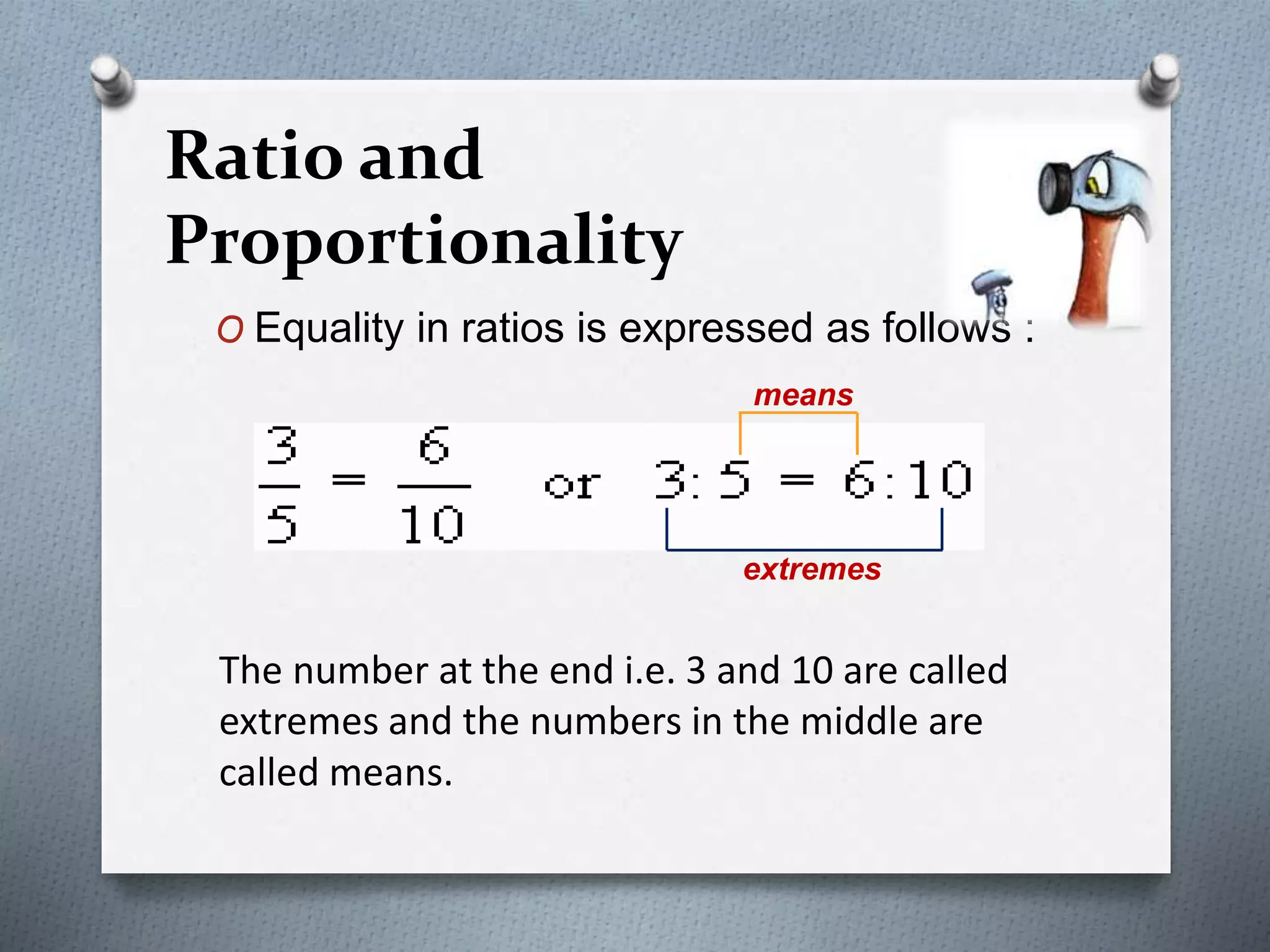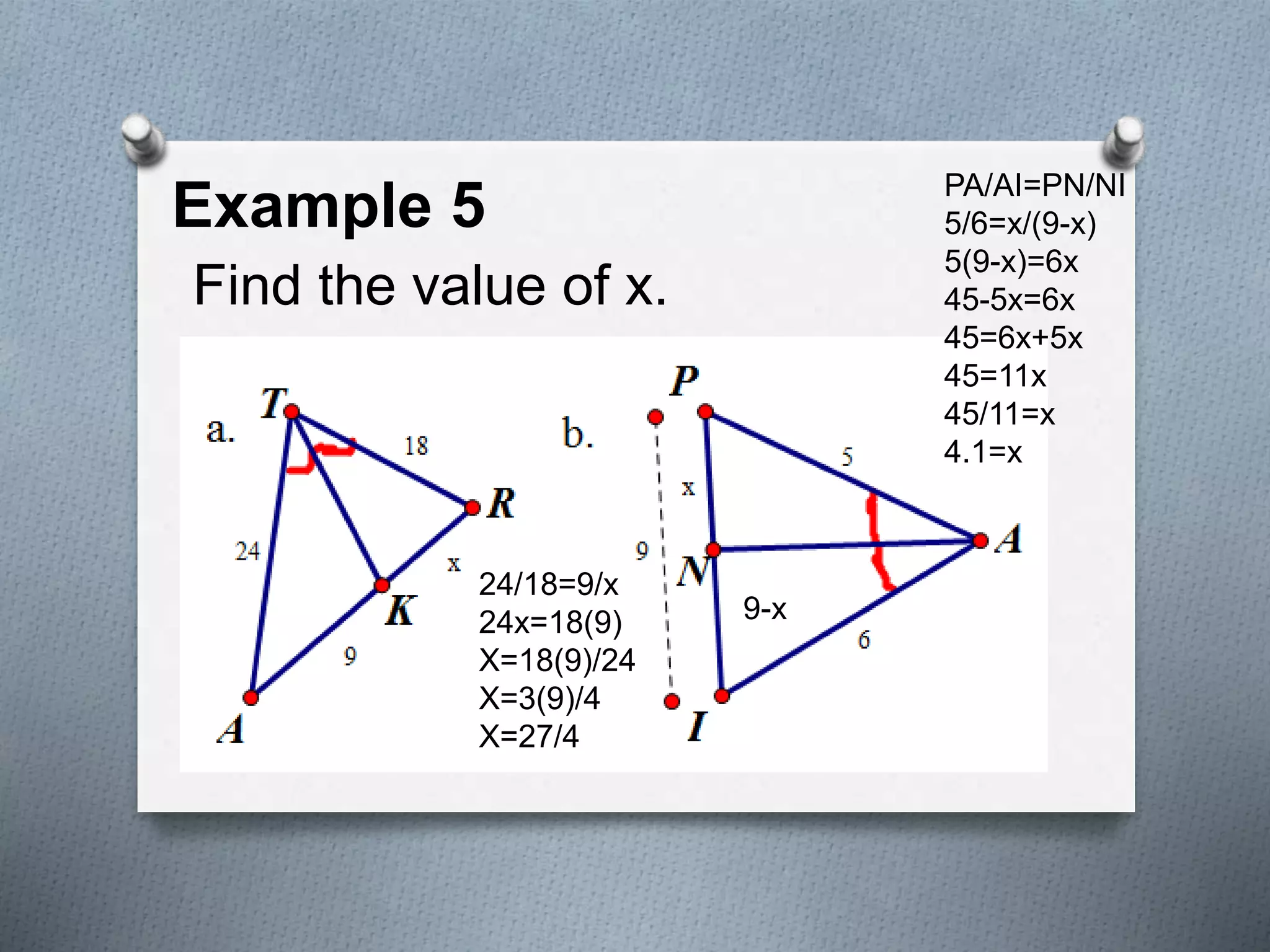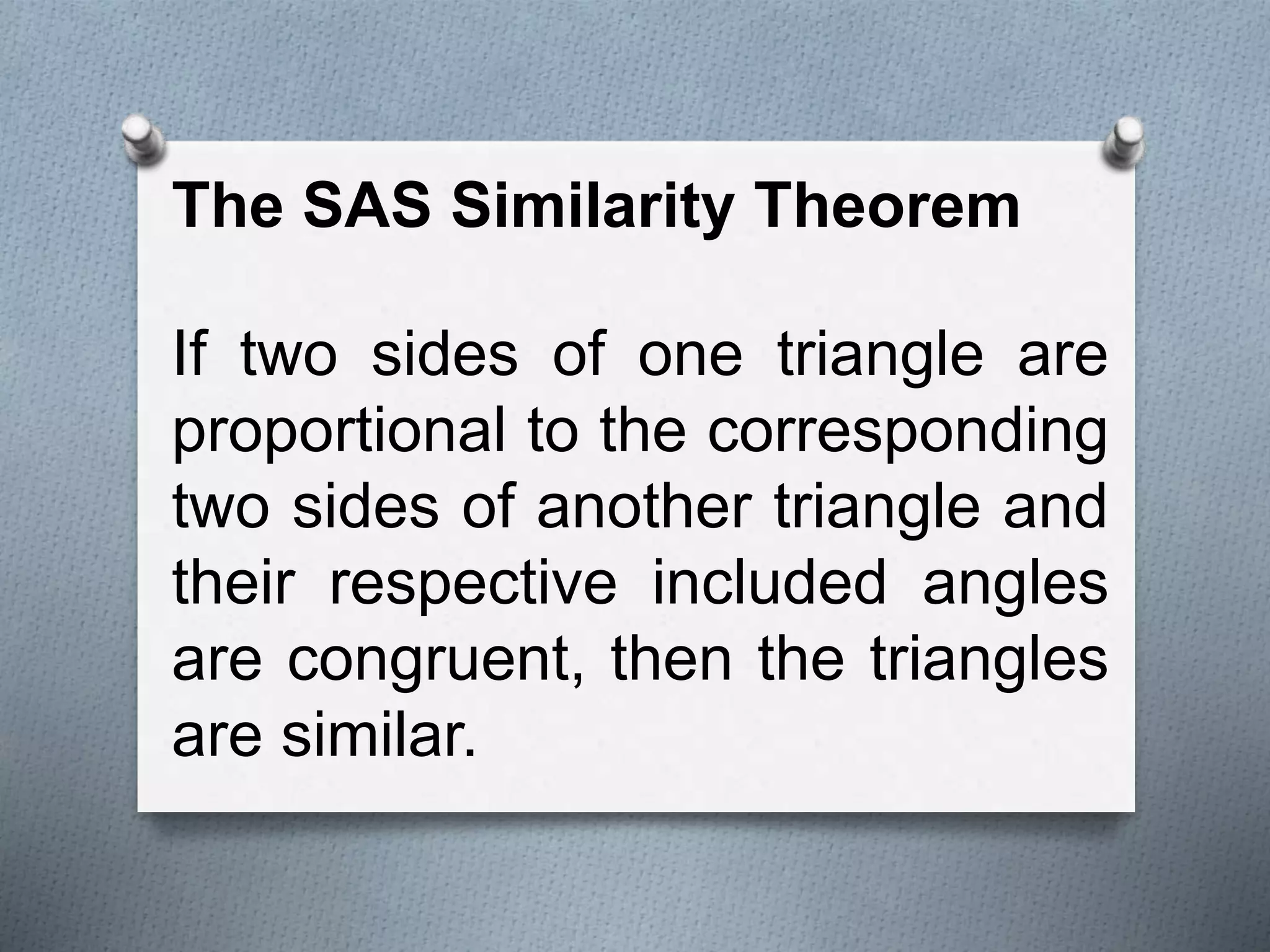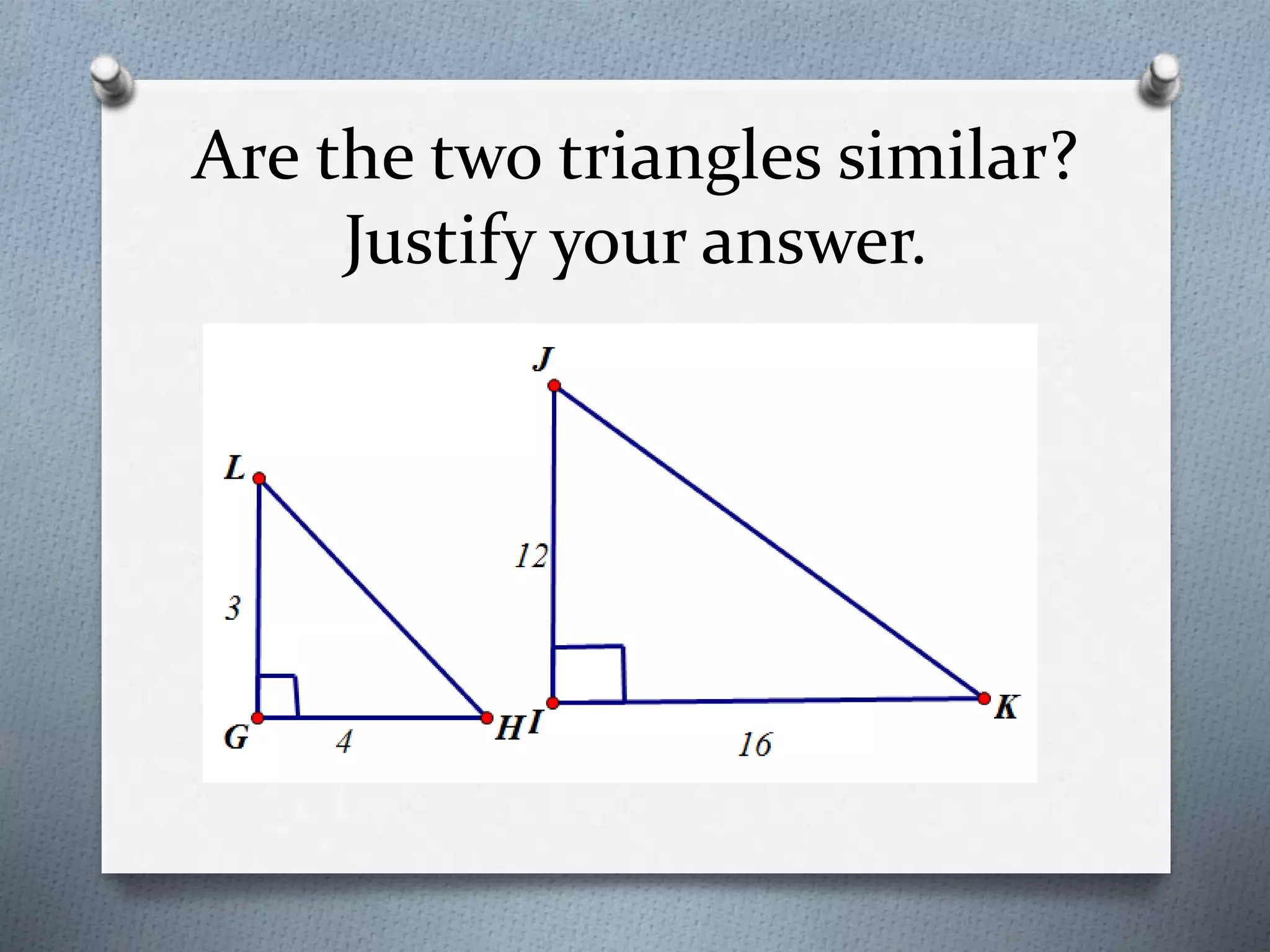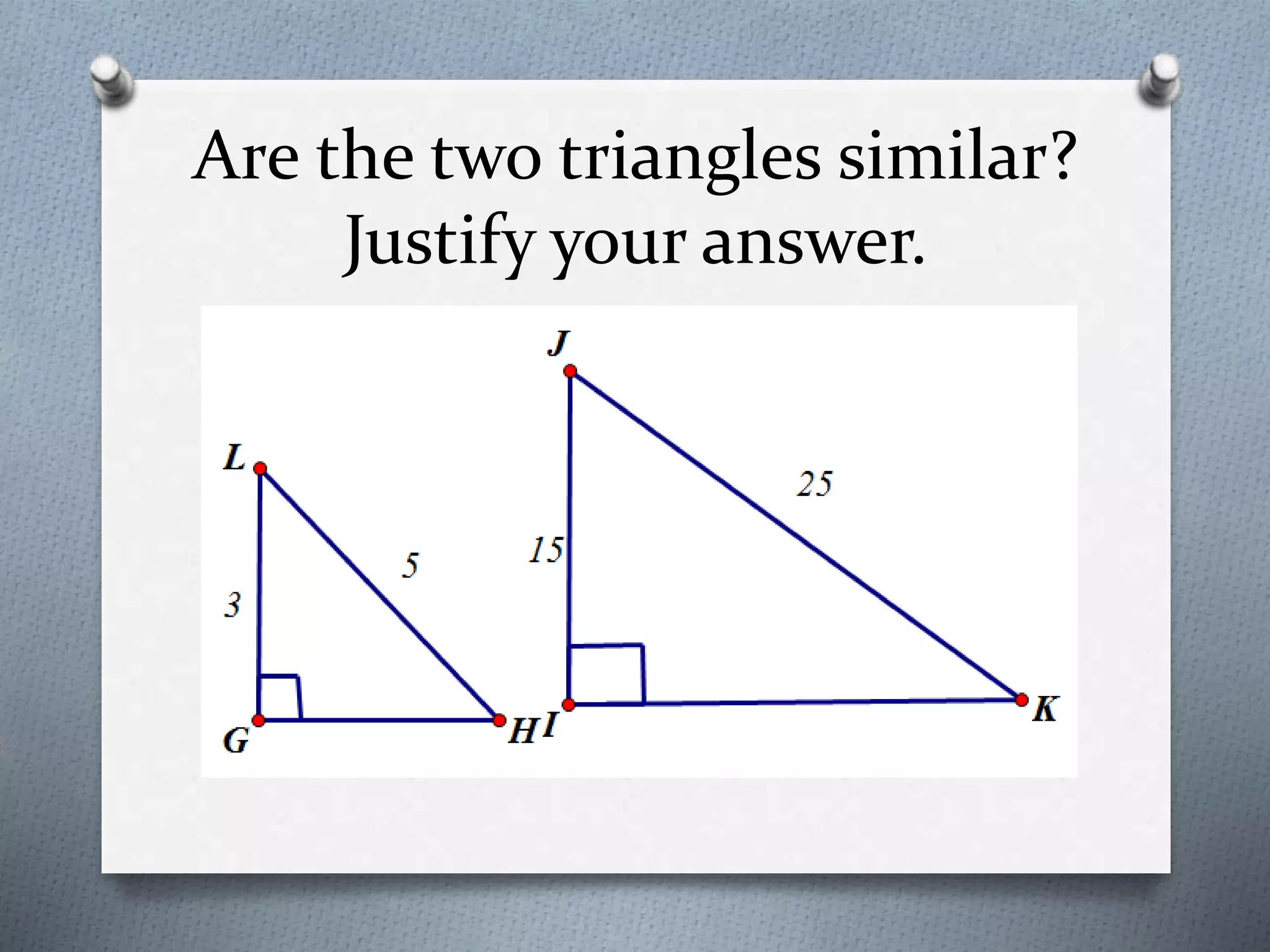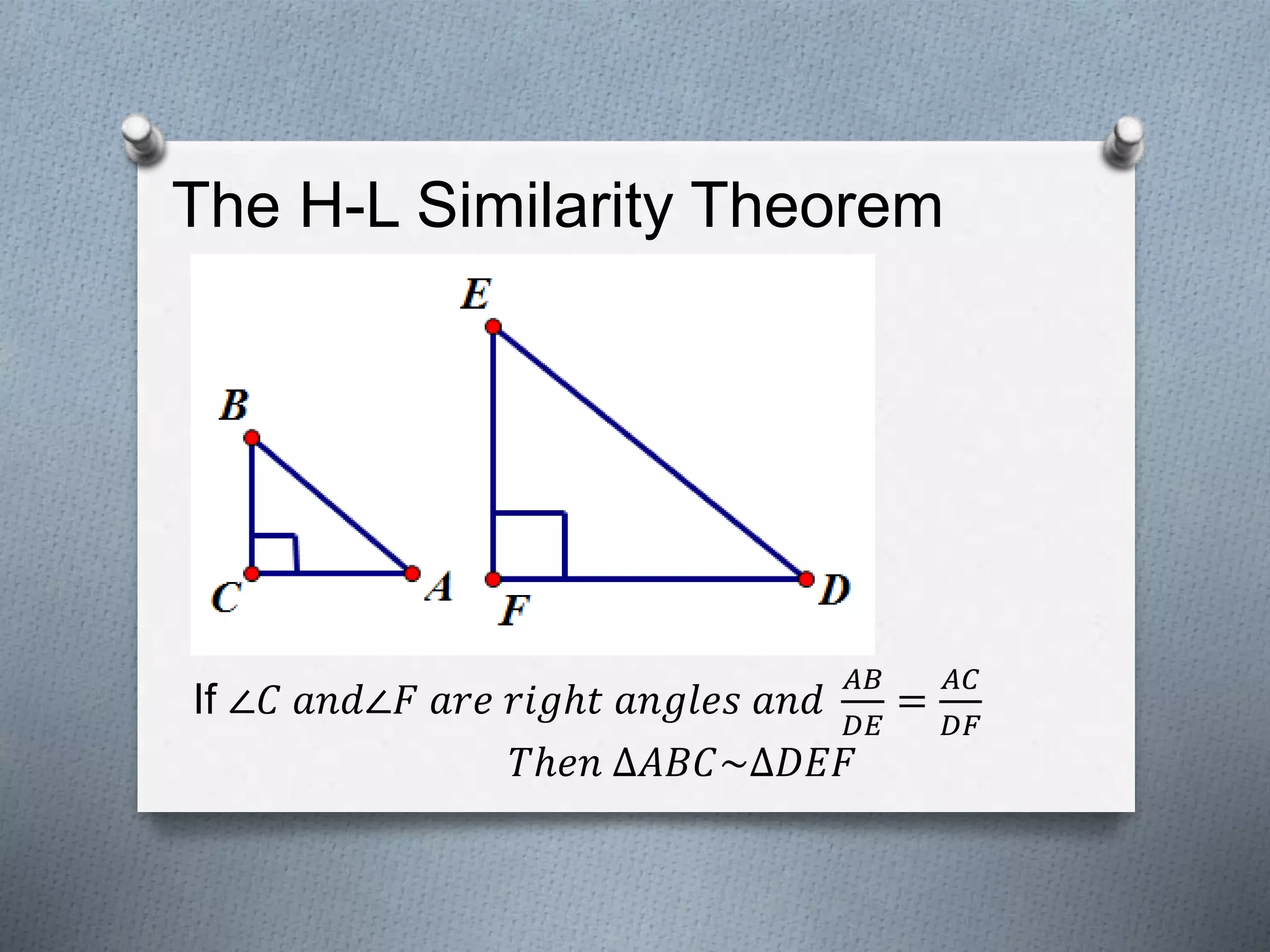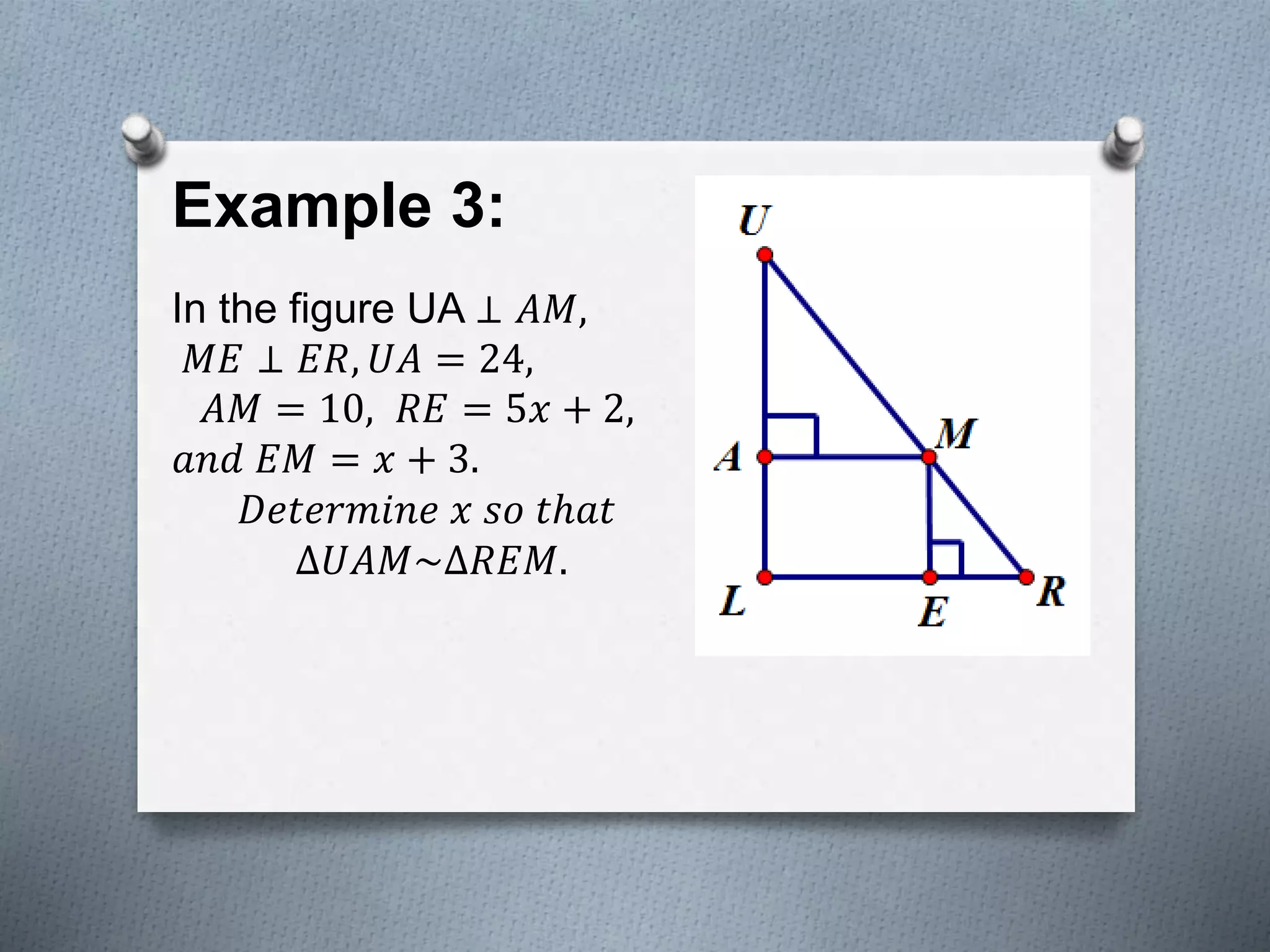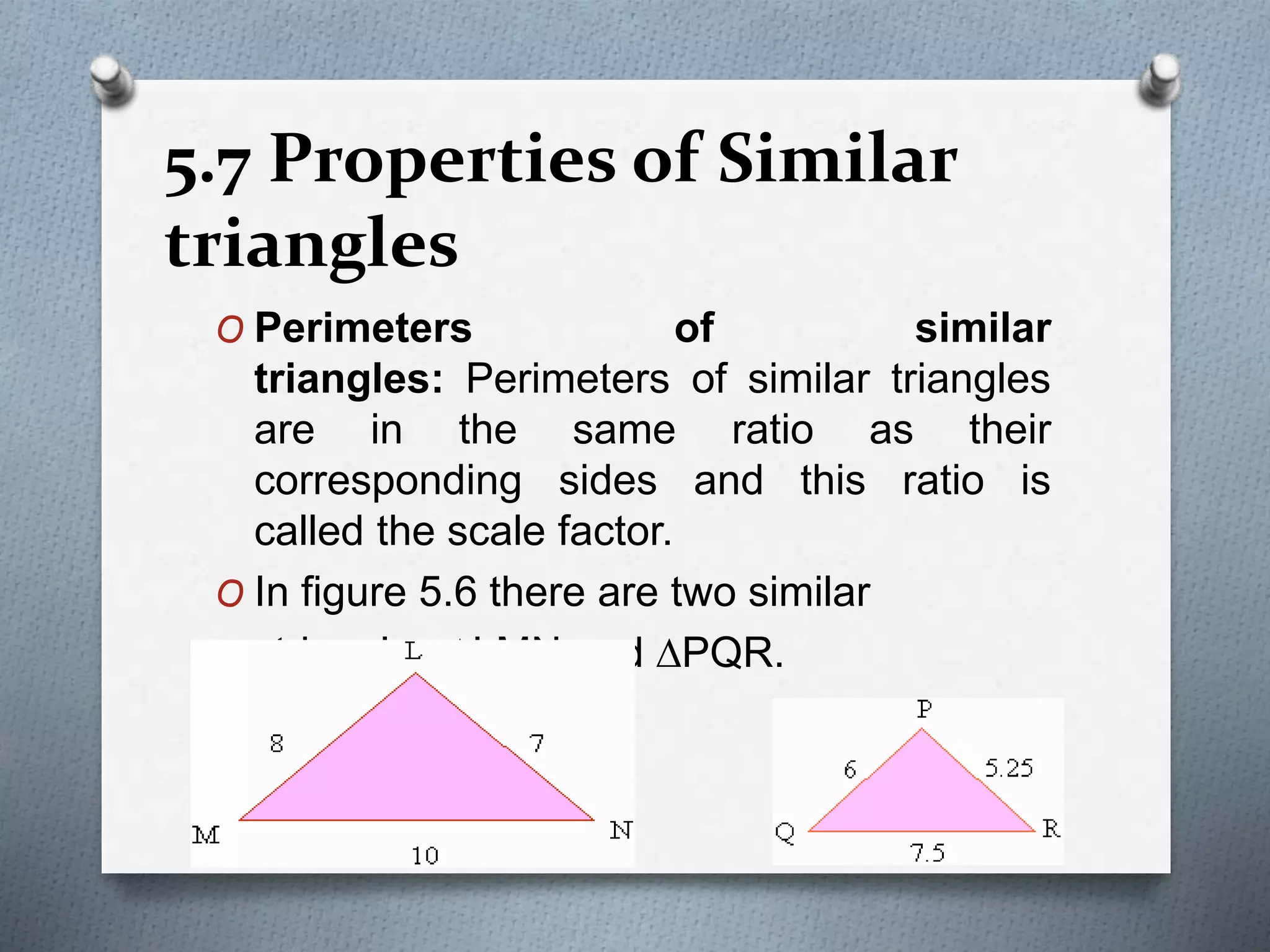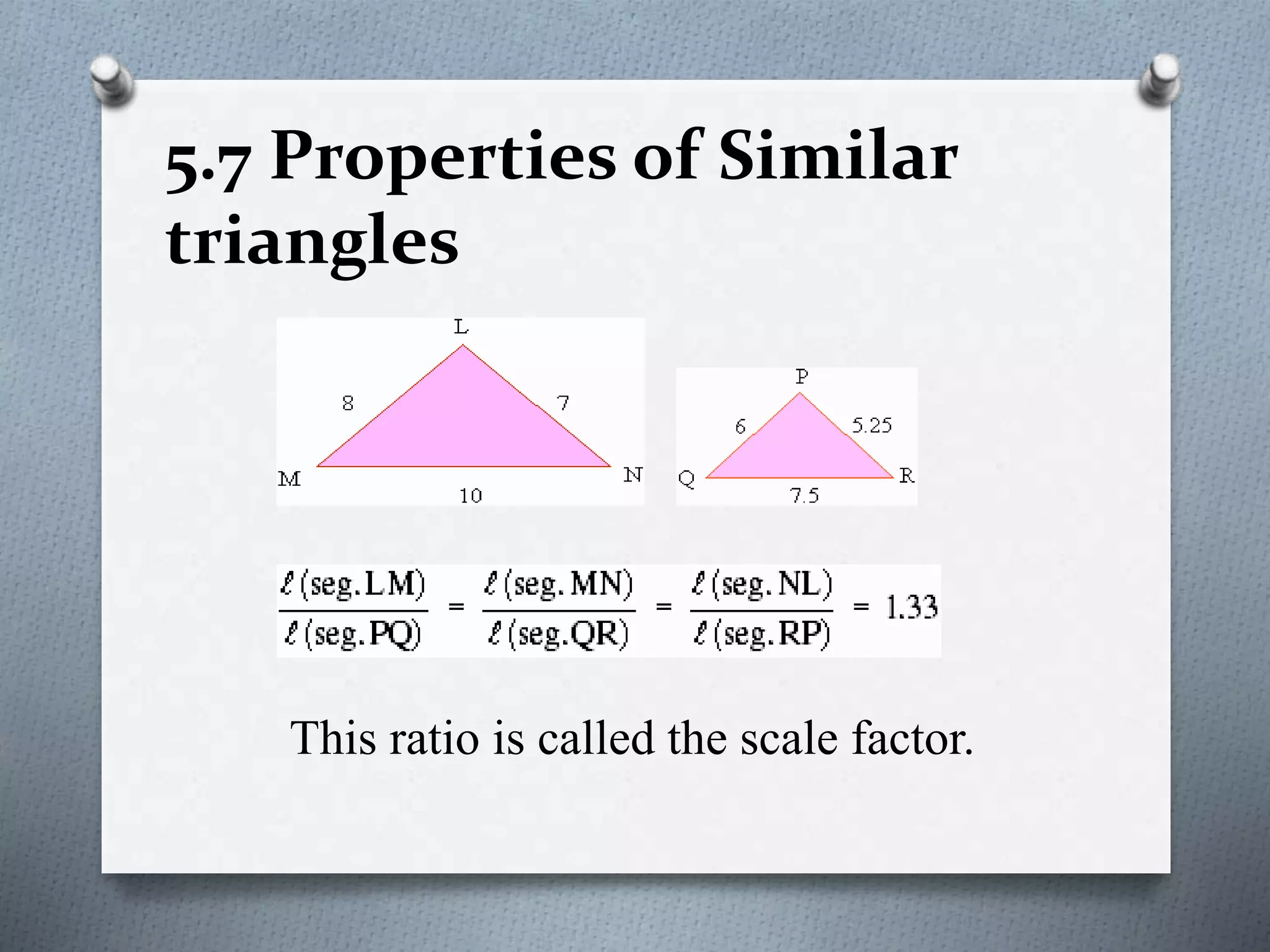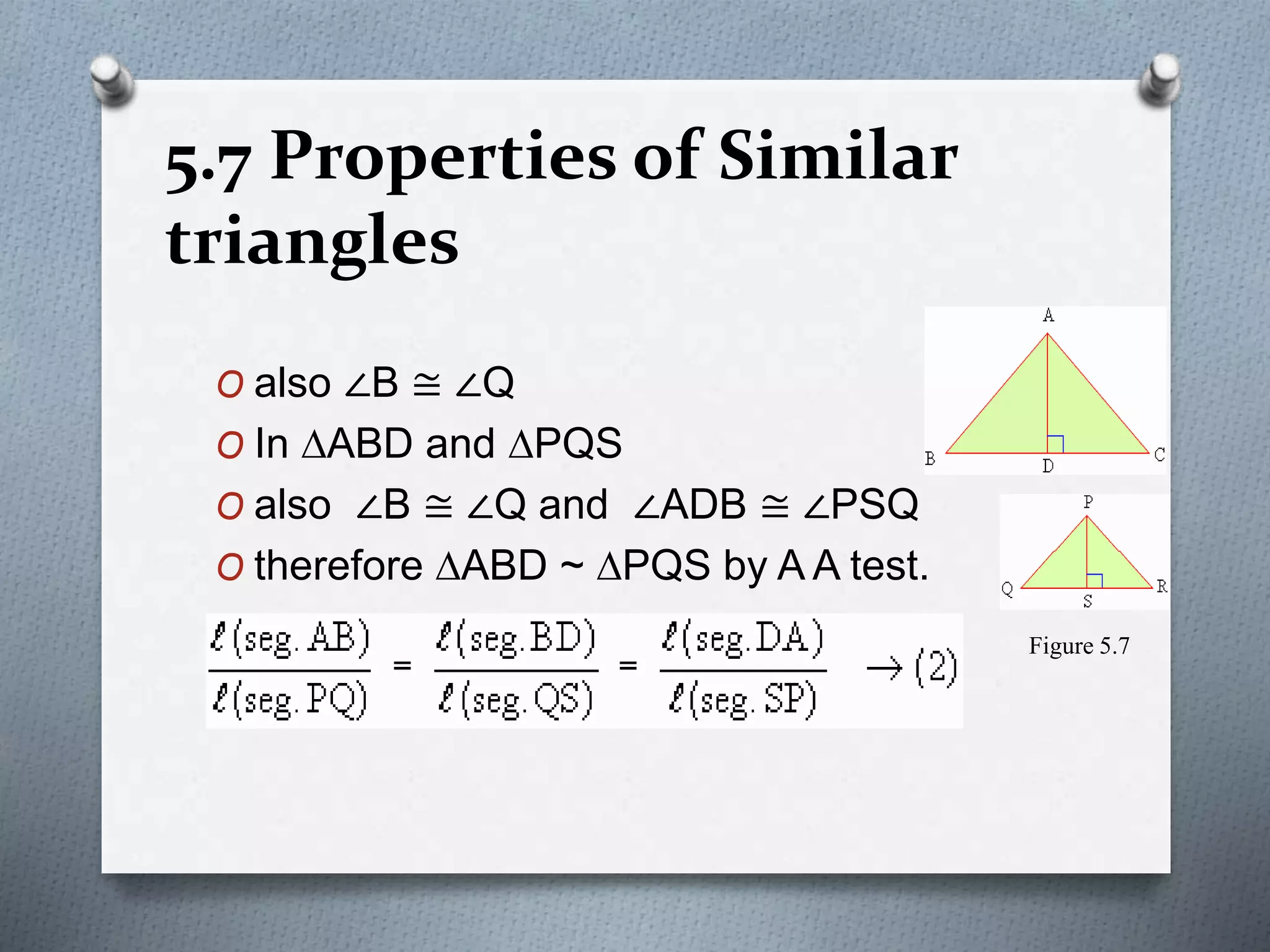The document discusses the concept of similarity in geometry, focusing on topics such as the properties and criteria for similar polygons and triangles, including the basic proportionality theorem and angle bisector theorem. It explains the significance of ratios and proportional relationships, providing examples of calculations and properties of similar figures. Additionally, it covers theorems related to similarity, including AAA, SAS, and SSS, and discusses how the ratios of perimeters and areas are related to similarity.
